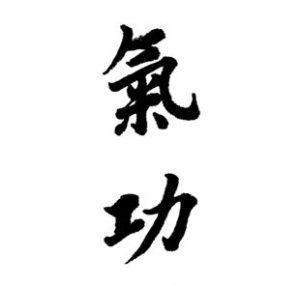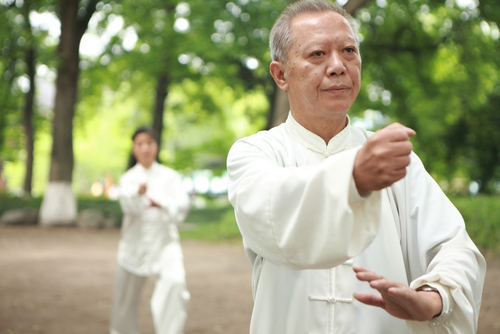
What is Qi Gong?
The word Qi Gong is composed of two Chinese ideograms: Qi, which translates into breath, energy and Gong meaning work or training. Literally Qi Gong means “energy work”, it is a recent term, dating back to the 50’s, regrouping all ancestral Asian methods, aimed at regulating Qi and maintaining health.
Qi Gong works first on the external meridians and, through them, affects the energy of the center, just like with acupuncture. It uses breath as a vehicle to move the Qi, thus activating one or two lines of energy (meridians) at the same time.
It is defined more by what it does than what it is: at the source of constant movements and transformations in nature. Qi irrigates the entire human body through subtle channels (meridians). It is in close link with the movements of the blood which carries the most material (dense) part of our energy. For most of the Eastern world, the state of health and well-being, is closely linked to the state of our Qi. Imbalances and and body dysfunctions are thus explained by deficiencies, excesses or blockings of the Qi. Caring for ourselves means maintaining the quality and fluidity of Qi through proper breathing, nutrition and energy work.
In China, the origins of this “energy work” date back 5000 years and are based on the principles of traditional Chinese medicine (path of meridians, acupuncture points, energetic physiology of the body and the organs). This practice is accessible to all, regardless of age and physical condition. Everyone can find the practice that suits them among the multiple forms (more than a thousand) that make this discipline.
The benefits of Qi Gong
Here are some benefits and practical applications of Qi Gong:
- Improvement of strength, coordination and flexibility
- Reduction of pain and stiffness
- Improved concentration, calm, and a general sense of well-being
- Sound, restful and refreshing sleep
- Increase of vital energy (Qi) and libido
- Rapid stress reduction
- Strengthening of the immune system
- Improvement of vital functions (cardiovascular, respiratory, circulatory, lymphatic and digestive)
- Regulation of blood pressure
The different methods of Qi Gong
- Shamanic Qi Gong: The Wu Chinese shamanic practices aim to connect with the universal energies of the sky, the Earth and Humanity to let the internal energy (Qi) flow, and attain illumination or spiritual awakening. It includes the use of talismans, mantras, mudras, visualizations and the search for connection to universal energies
- Daoist Qi Gong: Daoism is above all a philosophy, positioning everyone at their right place in the universe, in harmony with Nature. It takes its roots in shamanism in connection with spirits of Nature. Daoism emphasizes being natural, spontaneity, simplicity, detachment and effortless actions (Wu Wei Wu) often compared to water which flows naturally. The aim of this practice is to cultivate longevity to attain enlightenment and even immortality.
- Buddhist Qi Gong: Buddhist Qi Gong places the priority on the development of spiritual virtues, the cessation of desires and the pacification of the mind. Virtues of non-violence, compassion, abstention from addictions…are cultivated. The focus is primarily on the development of the mind, and physical exercise is considered only as an aid to sitting postures.
- Therapeutic Qi Gong: It is a full-fledged branch of traditional Chinese medicine. It incorporates what is beneficial to our health from various traditions (Confucianism, Buddhism, Taoism, Martial Arts). The goal is to stay in shape, prevent illnesses and support health by refining and nourishing our body, energy and mind.
Since 2012, I’m practicing Tian Jue Qi Gong, a unique form of medical Qi Gong created and taught by Master Zhou Ting Jue.

